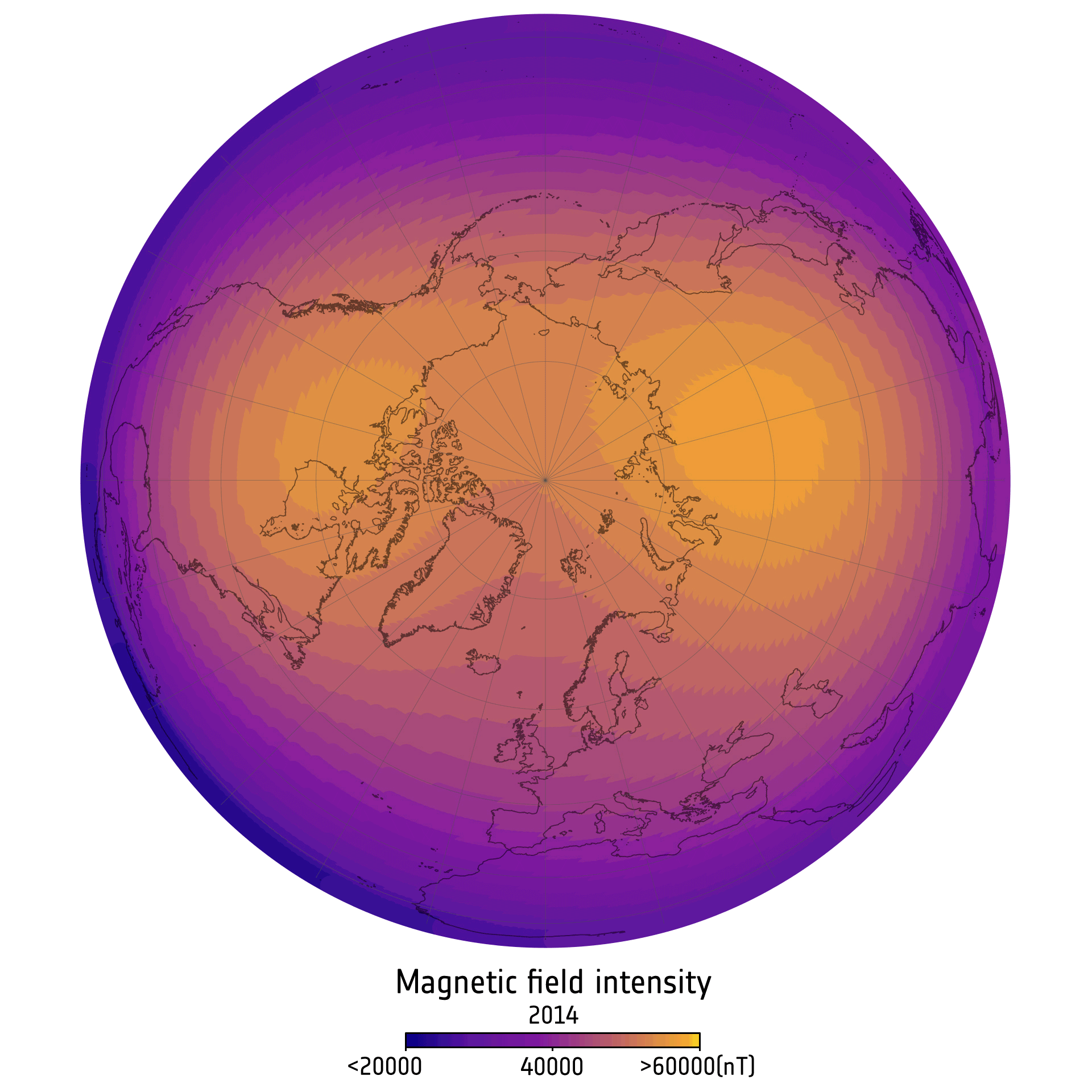A weak spot in Earth’s magnetic field above the South Atlantic Ocean has grown since 2014, satellite data reveal.
The region, known as the South Atlantic Anomaly, has spread over an area almost twice the size of continental Europe, forming a lobe toward Africa, where the field is weakening most rapidly.
“The South Atlantic anomaly is not just one block”, lead author of the study Chris Finlayprofessor of geomagnetism at the Technical University of Denmark, said in a statement. “The situation is developing differently towards Africa and towards South America. Something special is happening in this region which weakens the field more intensely.”
Researchers first detected the South Atlantic anomaly in the 19th century. Within its limits, the magnetic field that radiates from the Earth’s interior descends to an altitude of approximately 120 miles (200 kilometers) above the planet’s surface, which is much lower than the average altitude of the field of approximately 400 miles (650 km).
This poses a threat to satellites and other spacecraft. Earth’s magnetic field shields the planet and objects in low Earth orbit from charged solar particles and incoming X-rays and ultraviolet rays, so spacecraft traveling above the South Atlantic anomaly are exposed to more of these impacts. This could lead to equipment malfunctions or damage, or even power outages, according to the release.
Finlay and his colleagues think the South Atlantic anomaly is growing and spreading eastward because of strange flows at the boundary between Earth’s mantle and outer core, the layers of the planet sandwiched between Earth’s crust and inner core.
Earth’s magnetic field is largely generated by Earth’s outer core, a swirling ocean of molten iron located about 3,000 km below the planet’s surface. The liquid iron dynamo generates electric currents, and their flow induces a magnetic field that propagates through the mantle and extends through Earth’s atmosphere, forming two giant rings that meet near the poles.
Scientists have previously discovered that in some areas beneath the South Atlantic anomaly, magnetism generated by the outer core flows back into the core instead of out. These patterns, known as reverse flow zones, can migrate and expand, explaining the growth of the South Atlantic anomaly over the past 11 years, Finlay said.
“We can see one of these areas moving westward over Africa, which contributes to the weakening of the South Atlantic anomaly (the magnetic field) in this region,” he added.

Scientists have spotted unusual changes in data from the European Space Agency’s (ESA) Swarm mission, which uses three identical satellites to measure magnetic signals coming from the Earth’s interior and oceans. The data also revealed changes in magnetic field dynamics over Canada and Siberia, where magnetism appears more intense than average since Swarm began observing it in 2013.
Since 2014, the magnetic field over Canada has weakened slightly and that over Siberia has strengthened, according to the new study. The strong region over Canada has shrunk by an area almost equal to that of India, while the strong region over Siberia has expanded by an area equivalent to the size of Greenland. Researchers have attributed these changes to a shift of Earth’s north magnetic pole toward Siberia in recent years, but further monitoring is needed to see how the dynamics are changing.
“It’s truly wonderful to have a bird’s eye view of our dynamic Earth,” Anja Strommethe head of ESA’s Swarm mission, said in the statement. “The satellites are all healthy and providing excellent data, so we hope to be able to extend this record beyond 2030.”









